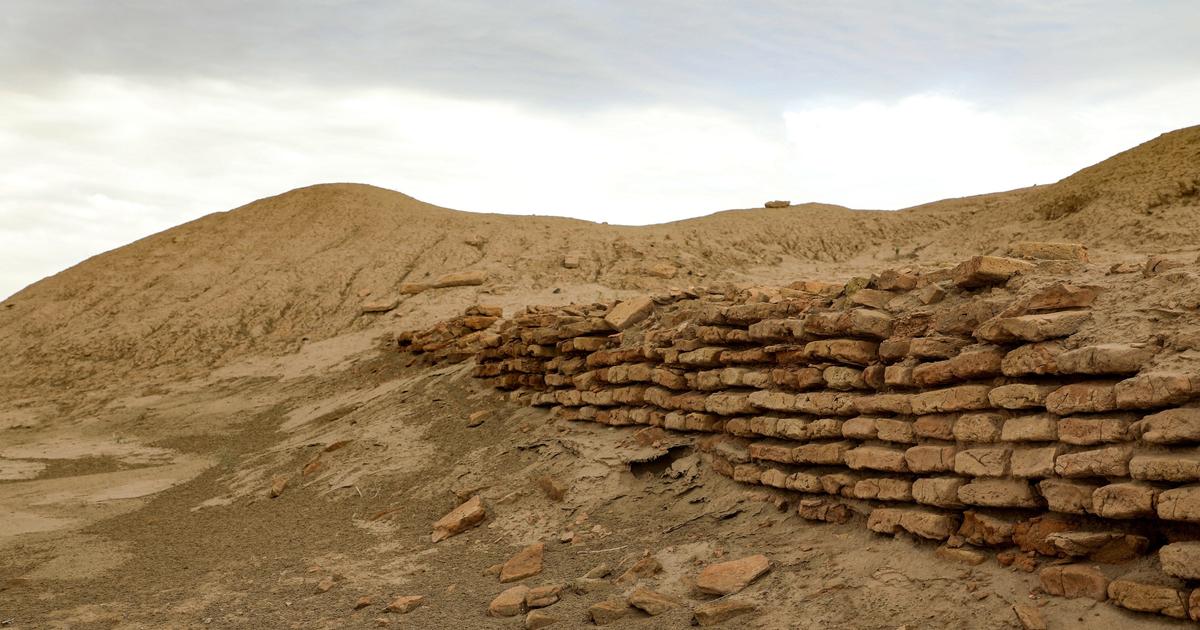 In Iraq, the ancient heritage threatened by repeated sandstorms
[ad_1]
In Iraq, the ancient heritage threatened by repeated sandstorms
[ad_1]

ARCHEOLOGY – Due to climate change and poor water management, many parts of Iraq are undergoing desertification. The phenomenon represents a danger for the preservation of ancient sites.
From the top of a mound, the Iraqi archaeologist Aqeel al-Mansrawi contemplates more than four millennia of history. Around him, waves of sand partly covered with dunes the ancient ancient temple dedicated to Shara, at the archaeological site of Umm al-Aqarib – “mother of scorpions“, in Arabic. “This is one of sumerian cities the most important in the south of the Mesopotamia”, explains the researcher. Aqeel al-Mansrawi knows this city of 5 km like the back of his hand2, whose apogee is around 2350 BC. He shares a bitter observation: in Umm al-Aqarib, the sand now “covers a good part of the site”. The phenomenon, which is recent, dates back only a “decade”.
Today, at Umm al-Aqarib, as at many other Iraqi archaeological sites, looting is no longer the only threat hovering over the thousand-year-old remains preserved by the arid climate. These ancient and poorly monitored places bear the brunt of certain indirect effects of climate change, namely increased salinization and, above all, increasingly frequent sandstorms in Iraq. The phenomenon is devastating: in 2022, a dozen of these gusts swept the country, according to an AFP count.
A wound of sand and salt
“In the next ten years, it is estimated that sand could have covered 80 to 90% of archaeological sites” from southern Iraq, breathes Aqeel al-Mansrawi. “Archaeological missions will have to make more efforts” to clear before starting to dig. The winds are today “more dusty” and they “carry soil fragments, especially sand and silt, which cause erosion and the crumbling of buildings” ancient, notes Jaafar al-Jotheri, professor of archeology at the Iraqi University Al-Qadissiyah. The fault, he says, with drier winters and longer and hotter summers when the temperature exceeds 50 degrees and which “weaken the soil and fragment it because of the lack of vegetation”.
Another enemy: salinization, also due to an environment “very dry”, says Mark Altaweel, professor of Near Eastern archeology at University College London. When “the water evaporates very quickly, only the salty residue remains”. And in too large quantities, salinization devours everything.
Desertification affects 39% of Iraqi land.
Barham Salih, former President of Iraq
According to the UN, Iraq is one of the five countries most vulnerable to certain very tangible effects of climate change, first and foremost prolonged droughts. This disaster is particularly visible along the Tigris and Euphrates. The two mythical rivers, major sources of irrigation for Iraqi agriculture, are today reduced to frail streams. If the lack of precipitation has a lot to do with it, the authorities especially condemn the dams built upstream of the rivers by Turkey and Iran, responsible according to Baghdad for a reduction in the flow of water.
Worse still, Iraq has the “worst hydraulic management” , points out Jaafar Jotheri, noting that it dates… from the Sumerian and Akkadian periods. Even today, farmers resort to flood irrigation, a technique widely seen as hugely wasteful. Without water, more and more Iraqi farmers and herders are migrating to cities in the hope of surviving. “After farmers abandon their land, the soil is more exposed to the wind” which carries sand and silt, points out Professor Jotheri. At the end of 2021, former President Barham Salih argued that “desertification affects 39% of Iraqi land”a figure set to increase.
So, what to do to try to save the Iraqi archaeological heritage? In this country where corruption is omnipresent and where, despite the oil windfall, a third of the population lives in poverty, the archaeological sites are neglected. However, Chamel Ibrahim, director of antiquities of Dhi Qar, the province where Umm al-Aqarib is located, assures that the government “works to contain the sand dunes”. A “green belt” made of trees must in particular be planted in the region at a cost of 5 billion dinars (about 3.5 million euros), he says. Jaafar Jotheri remains skeptical, however, since to keep the vegetation alive, “it takes a lot of water”. “We are the country that suffers the most and the one that acts the least” against the effects of climate change, he summarizes. Faced with the growing appetite for sand and the desert, stagnation awaits.
[ad_2]
Comments :
Post a Comment